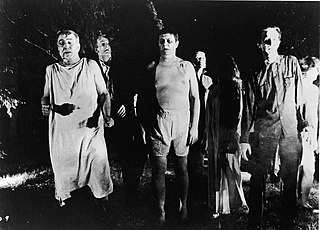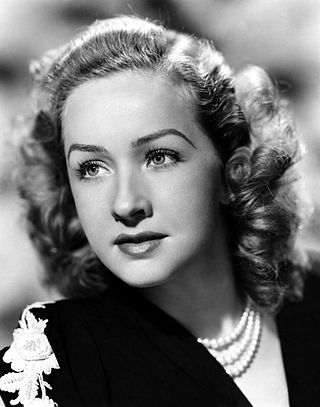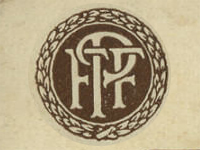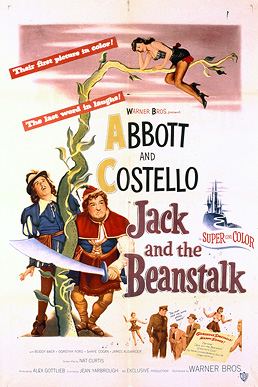Jack J. Gross (born July 29, 1902 in New York City, died March 12, 1964, age 61, London, England) was a motion picture and television producer.
Jack J. Gross (born July 29, 1902 in New York City, died March 12, 1964, age 61, London, England) was a motion picture and television producer.
Jack Gross was the son of George and Pauline Gross, Jewish immigrants from Hungary and Romania, respectively. The oldest of three brothers, Jack Gross began working as an usher after school in New York City, as a projectionist in St. Joseph, Missouri, and as a theater manager in South Bend, Indiana, Eldorado, Kansas, Minneapolis, San Francisco, and Los Angeles, before being appointed western division manager of RKO Theaters. [1]
In 1939, Gross became a producer at Universal Pictures, remaining there until 1943, when he was appointed executive producer at RKO. Gross joined Philip N. Krasne in 1952 to form Gross-Krasne, Inc, a pioneer American independent producer of television films. They produced, among other programs, the Big Town and Mayor of the Town. [2] Gross-Krasne also acquired the rights to O. Henry's stories and filmed 39 half-hour O. Henry Playhouse television shows. [3] [4] In 1952, Gross-Krasne bought the California Studios (now the Raleigh Studios) where many of their productions were filmed. [5]
In the Connaught Hotel, Gross died suddenly of basilar cerebral thrombosis while on a business trip to London. His remains were cremated and dispersed in the Garden of Rest Cemetery, London. [6]

David O. Selznick was an American film producer, screenwriter and film studio executive who produced Gone with the Wind (1939) and Rebecca (1940), both of which earned him an Academy Award for Best Picture. He also won the Irving Thalberg Award at the 12th Academy Awards, Hollywood's top honor for a producer, in recognition of his shepherding Gone with the Wind through a long and troubled production and into a record-breaking blockbuster.

A B movie, or B film, is a type of low-budget commercial motion picture. Originally, during the Golden Age of Hollywood, this term specifically referred to films meant to be shown as the lesser-known second half of a double feature, somewhat similar to B-sides in the world of recorded music. However, the production of such films as "second features" in the United States largely declined by the end of the 1950s. This shift was due to the rise of commercial television, which prompted film studio B movie production departments to transition into television film production divisions. These divisions continued to create content similar to B movies, albeit in the form of low-budget films and series.

Robert Bushnell Ryan was an American actor and activist. Known for his portrayals of hardened cops and ruthless villains, Ryan performed for over three decades. He was nominated for the Academy Award for Best Supporting Actor for his role in the film noir drama Crossfire (1947).

Bonita Gloria Granville Wrather was an American actress and producer.

Rhonda Fleming was an American film and television actress and singer. She acted in more than 40 films, mostly in the 1940s and 1950s, and became renowned as one of the most glamorous actresses of her day, nicknamed the "Queen of Technicolor" because she photographed so well in that medium.

The Famous Players Film Company was a film company founded in 1912 by Adolph Zukor in partnership with the Frohman brothers, powerful New York City theatre owners and producers.
A studio system is a method of filmmaking wherein the production and distribution of films is dominated by a small number of large movie studios. It is most often used in reference to Hollywood motion picture studios during the early years of the Golden Age of Hollywood from 1927 to 1948, wherein studios produced films primarily on their own filmmaking lots with creative personnel under often long-term contract, and dominated exhibition through vertical integration, i.e., the ownership or effective control of distributors and exhibition, guaranteeing additional sales of films through manipulative booking techniques such as block booking.
Joseph Francis Biroc, ASC was an American cinematographer. He was born in New York City and began working in films at the Paragon Studios in Fort Lee, New Jersey. After working there for approximately six years, he moved to Los Angeles. Once in Southern California, Biroc worked at the RKO Pictures movie studio. During World War II, he served in the U.S. Army Signal Corps and filmed the Liberation of Paris in August 1944. In 1950, Biroc left RKO Pictures and freelanced on projects at various studios. In addition to his film work, which included It's a Wonderful Life (1946) and The Flight of the Phoenix (1965), Biroc worked on various television series, including the Adventures of Superman and Wonder Woman. He frequently collaborated with film director Robert Aldrich.

Keith Andes was an American film, radio, musical theater, stage and television actor.

Jack and the Beanstalk is a 1952 American family comedy film starring the comedy team of Abbott and Costello and featuring Buddy Baer, Dorothy Ford and Barbara Brown. It is a comic retelling of the "Jack and the Beanstalk" fairy tale, produced by Abbott and Costello and distributed by Warner Bros.

Pandro Samuel Berman, also known as Pan Berman, was an American film producer.

Michael O'Shea was known as an American actor who appeared in feature films and later in television and whose career spanned the 1940s, 1950s, and 1960s.

Martin Ellyot Manulis was an American television, film, and theatre producer. Manulis was best known for his work in the 1950s producing the CBS Television programs Suspense, Studio One Summer Theatre, Climax!, The Best of Broadway and Playhouse 90. He was the sole producer of the award-winning drama series, Playhouse 90, during its first two seasons from 1956 to 1958.

Robert Lenard Lippert was an American film producer and cinema chain owner. He was president and chief operating officer of Lippert Theatres, Affiliated Theatres and Transcontinental Theatres, all based in San Francisco, and at his height, he owned a chain of 139 movie theaters.

James Graham Stewart was an American pioneer in the field of sound recording and re-recording. His career spanned more than five decades (1928–1980), during which he made substantial contributions to the evolution of the art and science of film and television sound.

Esther and the King is a 1960 American-Italian religious epic film produced and directed by Raoul Walsh and starring Joan Collins as Esther, Richard Egan as Ahasuerus, and Denis O'Dea as Mordecai. Walsh and Michael Elkins wrote the screenplay, which was based on the Book of Esther of the Hebrew Bible and the Old Testament. It recounts the origin of the Jewish celebration of Purim.
Britt Lomond was an American actor and television producer. Also credited as Glase Lohman.
African Patrol is a 39-episode syndicated adventure television series created, directed and produced by George Breakston in conjunction with Jack J. Gross and Philip N. Krasne. It was filmed on location in Kenya for a period of 15 months beginning in January 1957.

RKO Radio Pictures Inc., commonly known as RKO Pictures or simply RKO, was an American film production and distribution company, one of the "Big Five" film studios of Hollywood's Golden Age. The business was formed after the Keith-Albee-Orpheum theater chain and Joseph P. Kennedy's Film Booking Offices of America studio were brought together under the control of the Radio Corporation of America (RCA) in October 1928. RCA executive David Sarnoff engineered the merger to create a market for the company's sound-on-film technology, RCA Photophone, and in early 1929 production began under the RKO name. Two years later, another Kennedy concern, the Pathé studio, was folded into the operation. By the mid-1940s, RKO was controlled by investor Floyd Odlum.

Philip N. Krasne was an American attorney who became a film and television producer.